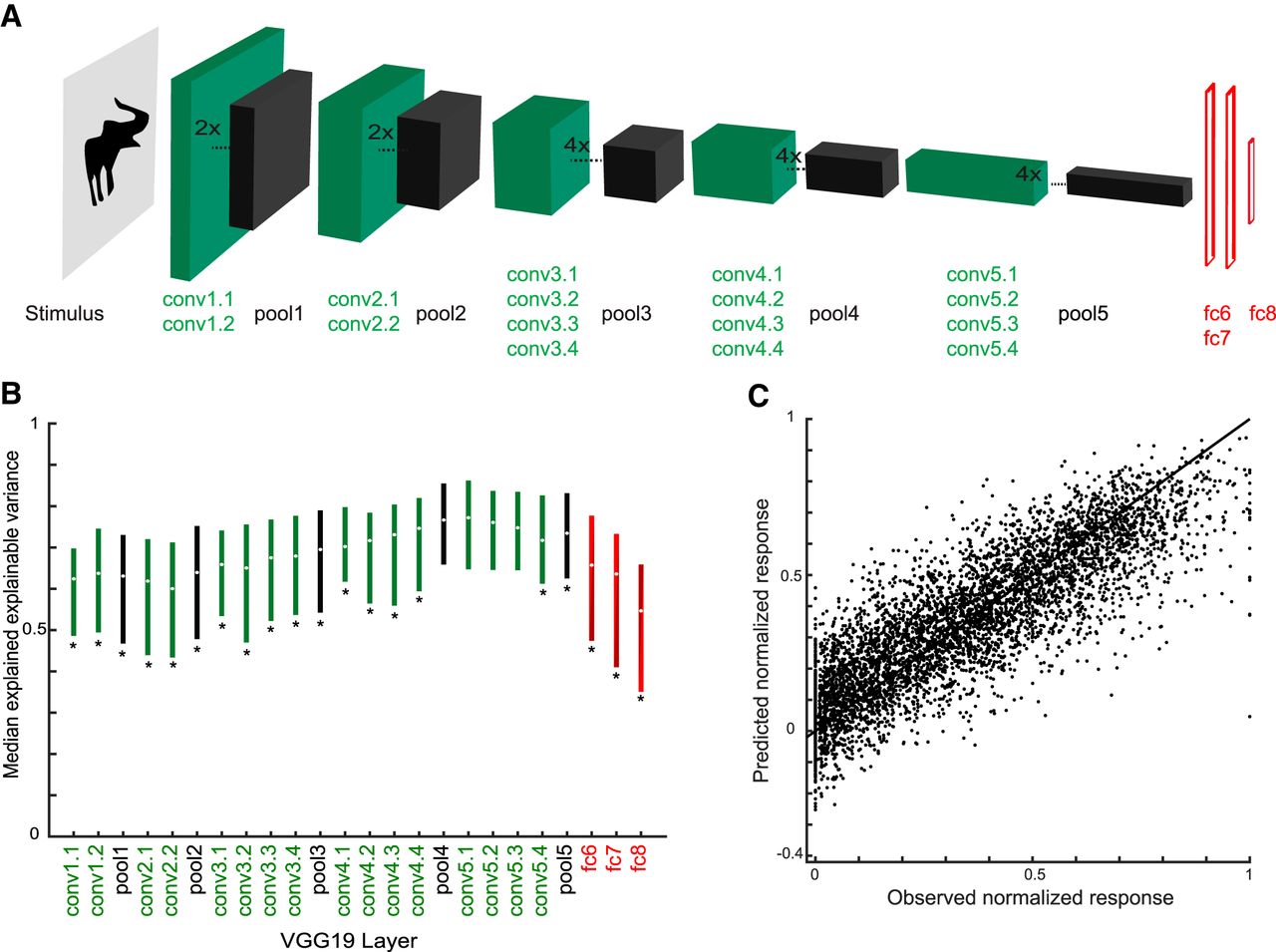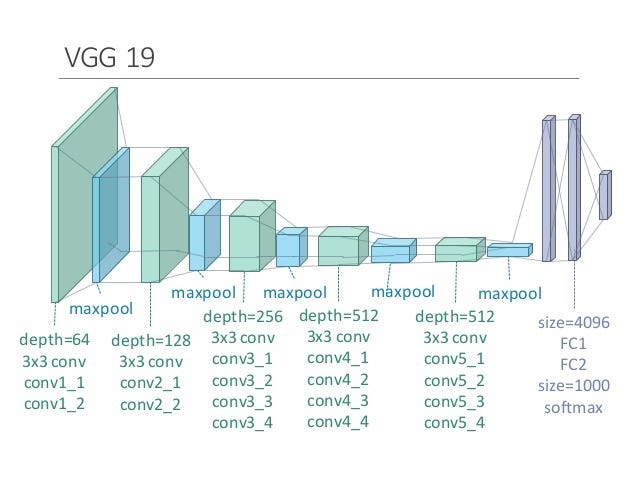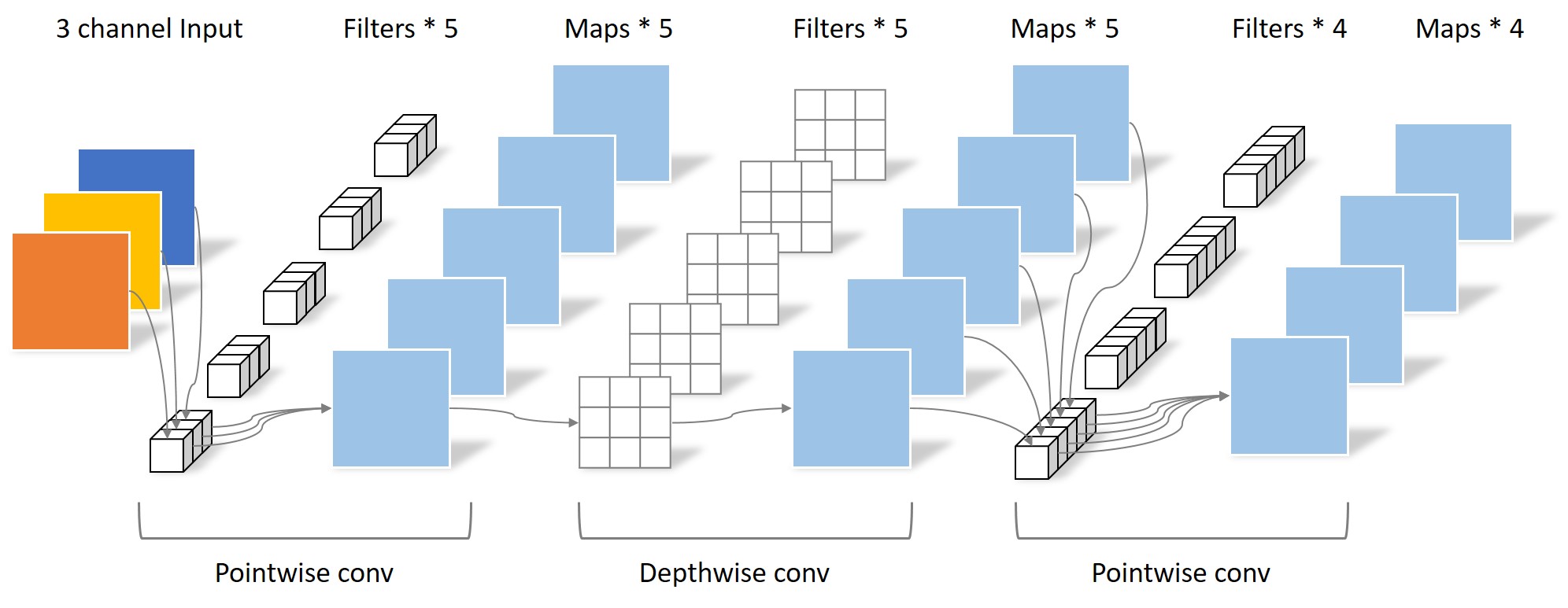For encoding model of paper: Decoding and encoding models reveal the role of mental simulation in the brain representation of meaning
Requirement
- python3.+
- scikit-learn==0.22.0
METASEMA dataset
- words: Spanish, 18 living words (i.e. cat, dog etc) and 18 nonliving words (i.e. mirror, knife etc)
- task: read (shallow processing) or think of related features (deep processing)
- 3T MRI
- 27 subjects
- 15 ROIs
Goals
- cross-validate standard encoding models using features extracted by word embedding models and computer vision models
- compare the model performance among models use different features extracted by different word embedding models and computer vision models
Encoding Model Pipeline
clf = linear_model.Ridge(
alpha = 1e2, # L2 penalty, higher means more regularization
normalize = True, # normalize within each batch of feeding of the input data
random_state = 12345,# random seeding for reproducibility
)
X # feature representation matrix (n_samples x n_features)
y # BOLD signals (n_samples x n_voxels)
cv # cross validation method (indices)
scorer = make_scorer(r2_score,multioutput = "raw_values")
results = cross_validate(clf,X,y,cv = cv, scoring = scorer,) # need to write a customized for-loop for cross validation due to the specify requirement of the scorer
scores = results["test_score"]
Computing RDM
feature_representations # n_word x n_features
# subtract the mean of each "word" but not standardize it, or normalize each row to its unit vector form.
RDM = distance.squareform(distance.pdist(feature_representations - feature_representations.mean(1).reshape(-1,1),
metric = 'cosine',))
# fill NaNs for plotting
np.fill_diagonal(RDM,np.nan)
Results
Average Variance Explained
 The average variance explained by the computer vision (VGG19, Densent169, MobilenetV2) and the word embedding (Fast Text, GloVe, Word2Vec) models, averaging across 27 subjects. The error-bars represent 95% confidence interval of a bootstrapping of 1000 iterations.
The average variance explained by the computer vision (VGG19, Densent169, MobilenetV2) and the word embedding (Fast Text, GloVe, Word2Vec) models, averaging across 27 subjects. The error-bars represent 95% confidence interval of a bootstrapping of 1000 iterations.
Difference between Computer Vision models and Word Embedding modles
 Differences between computer vision and word embedding models in variance explained. Computer vision models significantly explained more variance of the BOLD response compared to word embedding models. All one-sample t-tests against zero difference between models were significant and FDR corrected for multiple comparisons.
Differences between computer vision and word embedding models in variance explained. Computer vision models significantly explained more variance of the BOLD response compared to word embedding models. All one-sample t-tests against zero difference between models were significant and FDR corrected for multiple comparisons.
The difference between CV and WE model contrasted between Shallow and Deep Processing conditions
 Overall difference between Word Embedding and Computer Vision models per ROI (* FDR corrected for multiple comparisons). We found that the advantage of computer vision models over word embeddings models was higher in the deep processing condition relative to the shallow processing in PCG, PHG, and POP, while the opposite pattern was observed in FFG, IPL, and ITL
Overall difference between Word Embedding and Computer Vision models per ROI (* FDR corrected for multiple comparisons). We found that the advantage of computer vision models over word embeddings models was higher in the deep processing condition relative to the shallow processing in PCG, PHG, and POP, while the opposite pattern was observed in FFG, IPL, and ITL
Number of positive voxel explained by the two models
.jpeg?raw=true) The number of positive variance explained voxels for computer vision models and word embedding models. ROIs are color-coded and conditions are coded in different markers.
The number of positive variance explained voxels for computer vision models and word embedding models. ROIs are color-coded and conditions are coded in different markers.
 The difference of the number of positive variance explained voxels between computer vision models and word embedding models for each ROI and condition. *: p < 0.05, **: p < 0.01, ***: p < 0.0001.
The difference of the number of positive variance explained voxels between computer vision models and word embedding models for each ROI and condition. *: p < 0.05, **: p < 0.01, ***: p < 0.0001.
Voxel-wise scores by the two models
.jpeg?raw=true) Variance explained of individual voxels for all ROIs and conditions. ROIs are color-coded and conditions are coded in different makers. Particularly, voxels that cannot be positively explained by either the computer vision nor the word embedding models are shown by black circles. A few (~100 voxels for all subjects, ROIs, and conditions) that have extreme negative varience explained are not shown on the figure.
Variance explained of individual voxels for all ROIs and conditions. ROIs are color-coded and conditions are coded in different makers. Particularly, voxels that cannot be positively explained by either the computer vision nor the word embedding models are shown by black circles. A few (~100 voxels for all subjects, ROIs, and conditions) that have extreme negative varience explained are not shown on the figure.
.jpeg?raw=true) The posterior probability of computer vision models explain more variance than the word embedding models for a given voxel in a given ROI and condition. A prior probability of computer vision models explain more variance than the word embedding models was given by Beta(2, 2). This prior is centered at 0.5 and is lower for all other values. For a given ROI and condition, a voxel is better explained by the computer vision models was labeled “1” while “0” if vis versa. The posterior probability was computed by multiplying the prior probability and the likelihood of “1”. The posterior was normalized by divided its vector norm before reporting. θ: probability of computer vision models explain more variance than the word embedding models. The dotted line represents the average of initial prior probability, which means a naive belief that computer vision and word embedding models explain the same amount of variance for a given voxel.
The posterior probability of computer vision models explain more variance than the word embedding models for a given voxel in a given ROI and condition. A prior probability of computer vision models explain more variance than the word embedding models was given by Beta(2, 2). This prior is centered at 0.5 and is lower for all other values. For a given ROI and condition, a voxel is better explained by the computer vision models was labeled “1” while “0” if vis versa. The posterior probability was computed by multiplying the prior probability and the likelihood of “1”. The posterior was normalized by divided its vector norm before reporting. θ: probability of computer vision models explain more variance than the word embedding models. The dotted line represents the average of initial prior probability, which means a naive belief that computer vision and word embedding models explain the same amount of variance for a given voxel.
Word Embedding Models in Spanish
source: Tommaso Teofili August 17, 2018
# for example, load fast test model in memory
fasttext_link: http://dcc.uchile.cl/~jperez/word-embeddings/fasttext-sbwc.vec.gz
fasttest_model = gensim.models.keyedvectors.KeyedVectors.load_word2vec_format(fasttext_downloaded_file_name)
for word in words:
word_vector_representation = fasttest_model.get_vector(word)

FastText, now supports 157 languages
@Article{bojanowski2016a,
title={Enriching word vectors with subword information},
author={Bojanowski, Piotr and Grave, Edouard and Joulin, Armand and Mikolov, Tomas},
journal={Transactions of the Association for Computational Linguistics},
volume={5},
pages={135--146},
year={2017},
publisher={MIT Press}
}
- Facebook AI Research lab
- efficient learning for text classification
- hierarchical classifier
- Huffman algorithm to build the tree --> depth of frequent words is smaller than for infrequent ones
- bag of words (BOW) -- ignore the word order
- ngrams
- represntational space = 300
GloVe
@CONFERENCE{Pennnigton2014a,
title={Glove: Global vectors for word representation},
author={Pennington, Jeffrey and Socher, Richard and Manning, Christopher},
booktitle={Proceedings of the 2014 conference on empirical methods in natural language processing (\uppercase{EMNLP})},
pages={1532--1543},
year={2014}
}
- Stanford
- nearest neighbors
- linear substructures
- non-zero entries of a global word-word co-occurrence matrix
- representational space = 300
Word2Vec - the 2013 paper
@inproceedings{mikolov2013a,
title={Distributed representations of words and phrases and their compositionality},
author={Mikolov, Tomas and Sutskever, Ilya and Chen, Kai and Corrado, Greg S and Dean, Jeff},
booktitle={Advances in neural information processing systems},
pages={3111--3119},
year={2013}
}
- skip-gram model with negative-sampling
- minimum word frequency is 5
- negative sampling at 20
- 273 most common words were downsampled
- representational space = 300
Computer Vision Models
VGG19
@article{simonyan2014very,
title={Very deep convolutional networks for large-scale image recognition},
author={Simonyan, Karen and Zisserman, Andrew},
journal={arXiv preprint arXiv:1409.1556},
year={2014}
}
- small convolution filters (3 x 3)
- well-generalisible feature representations
- representational space = 512
DenseNet121
@inproceedings{huang2017densely,
title={Densely connected convolutional networks},
author={Huang, Gao and Liu, Zhuang and Van Der Maaten, Laurens and Weinberger, Kilian Q},
booktitle={Proceedings of the IEEE conference on computer vision and pattern recognition},
pages={4700--4708},
year={2017}
}
- Each layer is receiving a “collective knowledge” from all preceding layers
- The error signal can be easily propagated to earlier layers more directly. This is a kind of implicit deep supervision as earlier layers can get direct supervision from the final classification layer.
- DenseNet performs well when training data is insufficient
- representational space = 1028
source: Tsang, blog Nov 25, 2018
source: Tsang, blog Nov 25, 2018
MobileNet_V2
@article{howard2017mobilenets,
title={Mobilenets: Efficient convolutional neural networks for mobile vision applications},
author={Howard, Andrew G and Zhu, Menglong and Chen, Bo and Kalenichenko, Dmitry and Wang, Weijun and Weyand, Tobias and Andreetto, Marco and Adam, Hartwig},
journal={arXiv preprint arXiv:1704.04861},
year={2017}
}
- bottle net feature bottle net
- mobile-oriented design
- representational space = 1280
source: Hollemans, blog, 22 April, 2018

.png?raw=true)
.png?raw=true)
.png?raw=true)


).png?raw=true)





